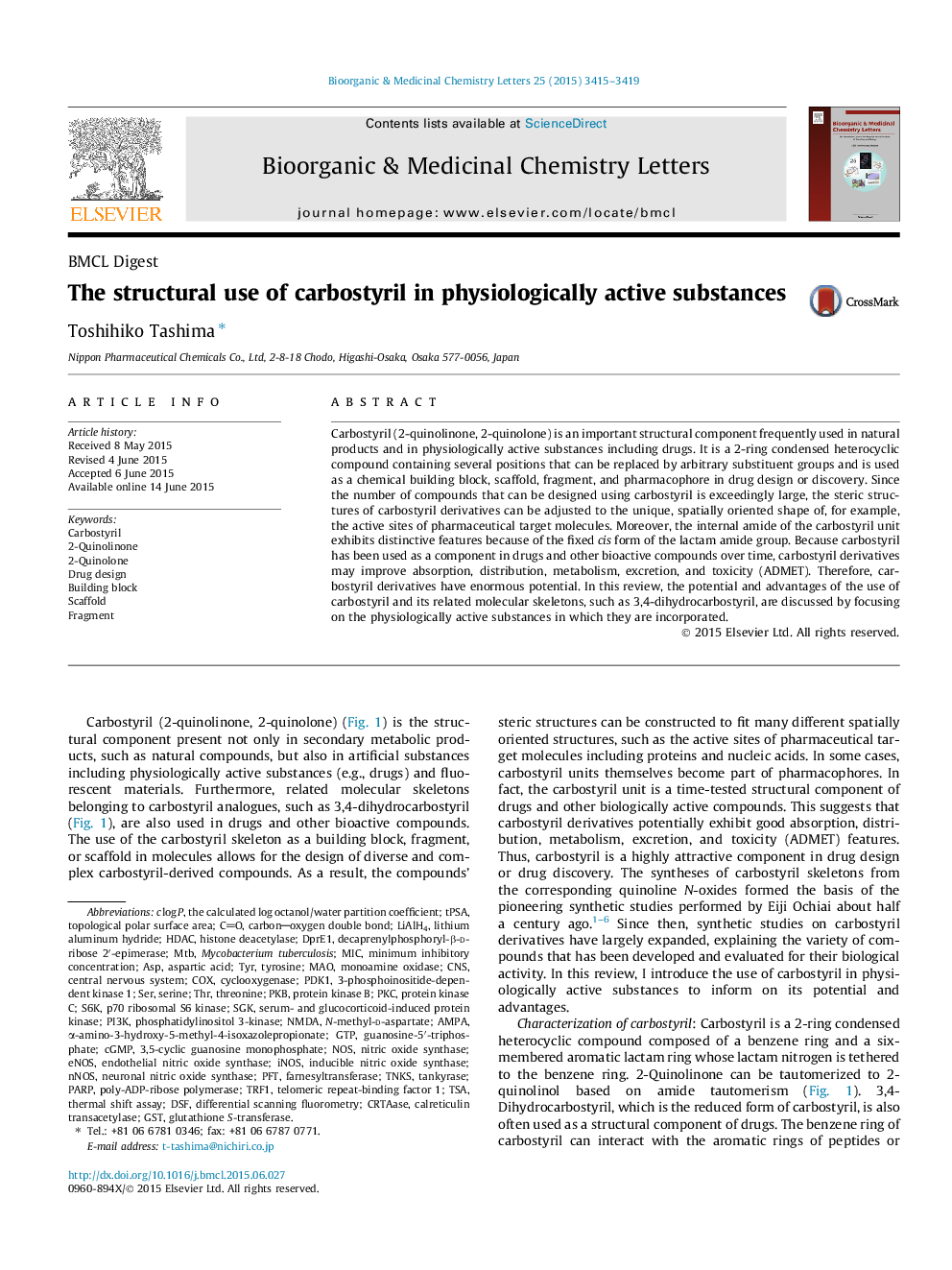| Article ID | Journal | Published Year | Pages | File Type |
|---|---|---|---|---|
| 1370508 | Bioorganic & Medicinal Chemistry Letters | 2015 | 5 Pages |
Carbostyril (2-quinolinone, 2-quinolone) is an important structural component frequently used in natural products and in physiologically active substances including drugs. It is a 2-ring condensed heterocyclic compound containing several positions that can be replaced by arbitrary substituent groups and is used as a chemical building block, scaffold, fragment, and pharmacophore in drug design or discovery. Since the number of compounds that can be designed using carbostyril is exceedingly large, the steric structures of carbostyril derivatives can be adjusted to the unique, spatially oriented shape of, for example, the active sites of pharmaceutical target molecules. Moreover, the internal amide of the carbostyril unit exhibits distinctive features because of the fixed cis form of the lactam amide group. Because carbostyril has been used as a component in drugs and other bioactive compounds over time, carbostyril derivatives may improve absorption, distribution, metabolism, excretion, and toxicity (ADMET). Therefore, carbostyril derivatives have enormous potential. In this review, the potential and advantages of the use of carbostyril and its related molecular skeletons, such as 3,4-dihydrocarbostyril, are discussed by focusing on the physiologically active substances in which they are incorporated.
Graphical abstractFigure optionsDownload full-size imageDownload as PowerPoint slide
